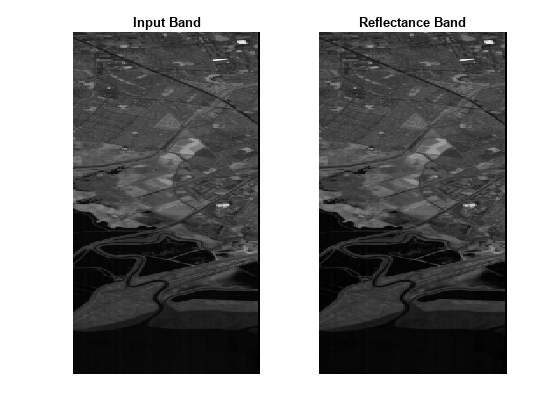dn2reflectance
デジタル値の反射率への変換
説明
newspcube = dn2reflectance(spcube)
newspcube = dn2reflectance(spcube,BlockSize=blocksize)
この関数は、入力イメージを個別ブロックに分割して各ブロックを処理し、各ブロックの処理結果を連結して出力行列を形成します。スペクトル イメージは、大きすぎてそのままではシステム メモリに収まらない場合のある多次元データ セットです。そのため、関数 dn2reflectance の実行中にシステムでメモリ不足が発生する場合があります。このような問題に直面した場合は、次の構文を使用してブロック処理を実行します。
たとえば、dn2reflectance(spcube,BlockSize=[50 50]) は、入力イメージをオーバーラップのない 50 行 50 列のブロックに分割し、各ブロックのピクセルの反射率値を計算します。
メモ
この関数には、Hyperspectral Imaging Library for Image Processing Toolbox™ が必要です。Hyperspectral Imaging Library for Image Processing Toolbox はアドオン エクスプローラーからインストールできます。アドオンのインストールの詳細については、アドオンの入手と管理を参照してください。
Hyperspectral Imaging Library for Image Processing Toolbox は、MATLAB® Online™ および MATLAB Mobile™ によってサポートされないため、デスクトップの MATLAB が必要です。
例
入力引数
出力引数
詳細
バージョン履歴
R2020b で導入参考
dn2radiance | radiance2Reflectance | empiricalLine | iarr | sharc | hypercube | multicube
